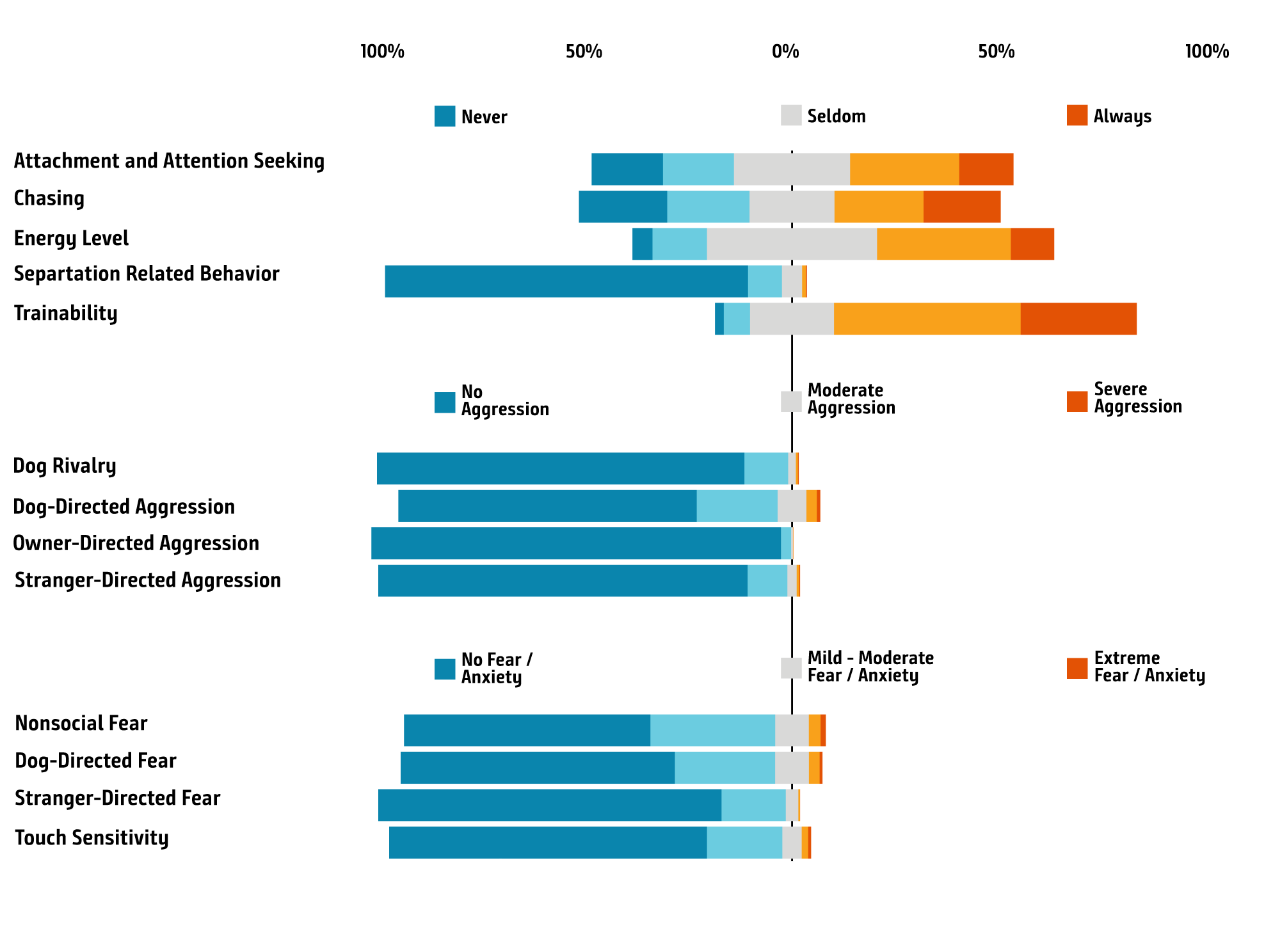C-BARQ was originally developed and validated by Dr. James Serpell and Yuying Hsu at the University of Pennsylvania in 2003. The questionnaire includes 100 questions about various aspects of canine behavior that can be summarized in the fourteen categories shown in the first graph below. In most categories, the C-BARQ results show clear, breed-consistent results. There are a few categories (e.g., Attachment and Attention Seeking, and Chasing) where there is no clear breed-specific behavior pattern

Even in the areas where there is a very strong breed-specific pattern, like Dog-Directed Aggression, one can see patterns based on sex status and age, for example, as shown in the second graph below. In this case, one can see dog-directed aggression increases slightly over time for all the dogs, but most so in neutered males.

The C-BARQ data in the Data Commons can be retrieved in raw form, by year (that is, all answers to all questions for each dog), or in various summarized forms (like the scores by category shown in the graphs on this page).
More information on the C-BARQ instrument can be found at https://vetapps.vet.upenn.edu/cbarq/
